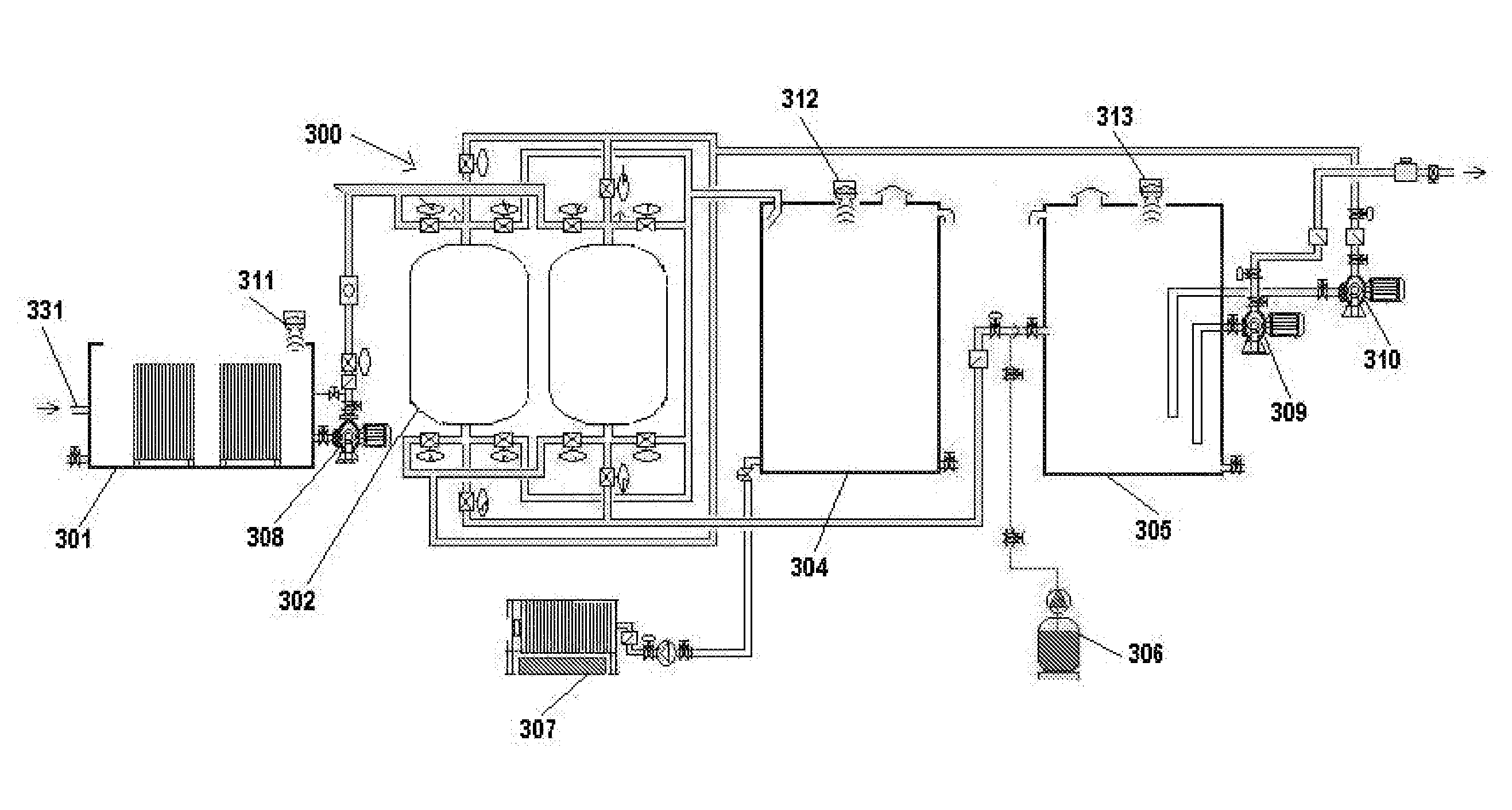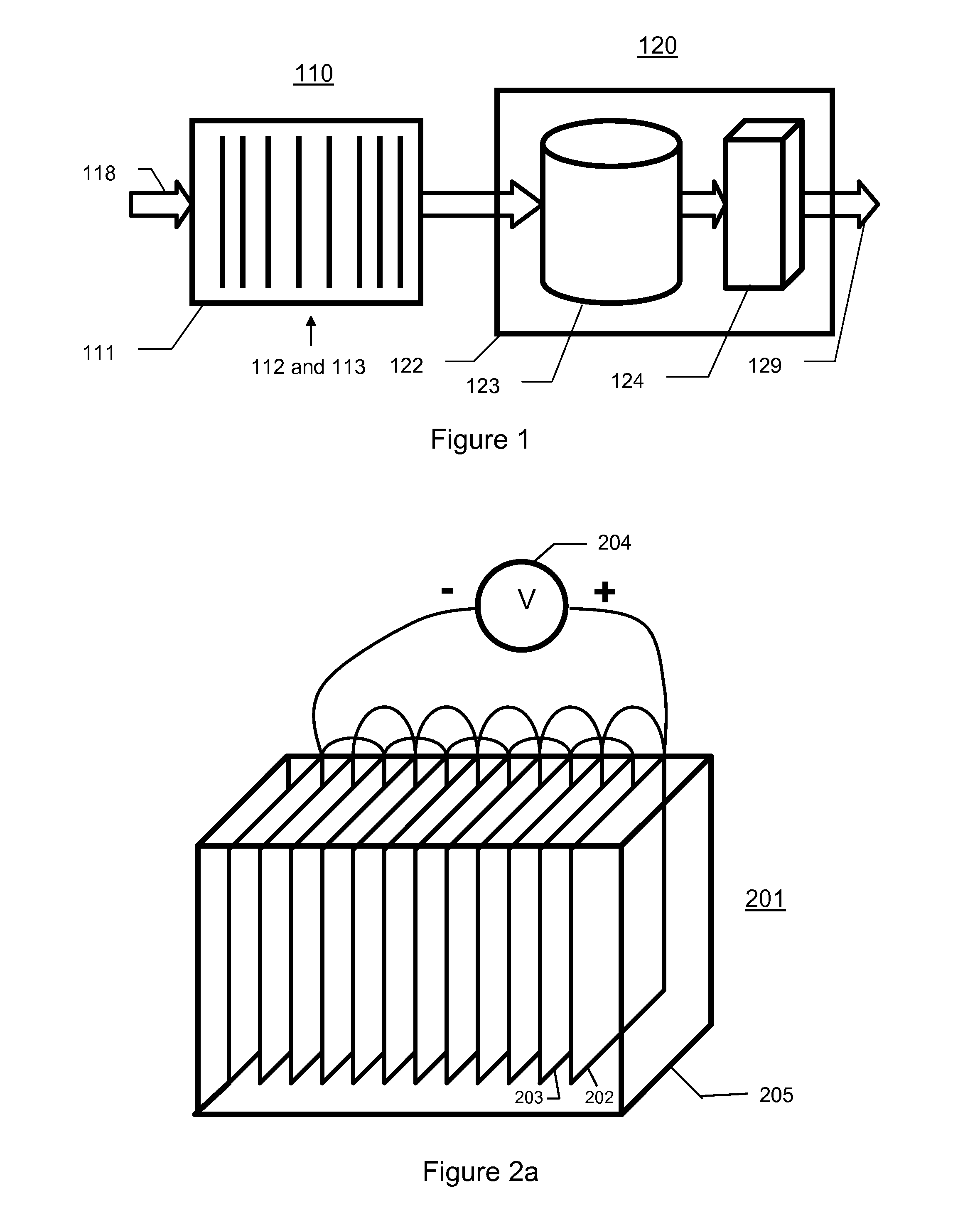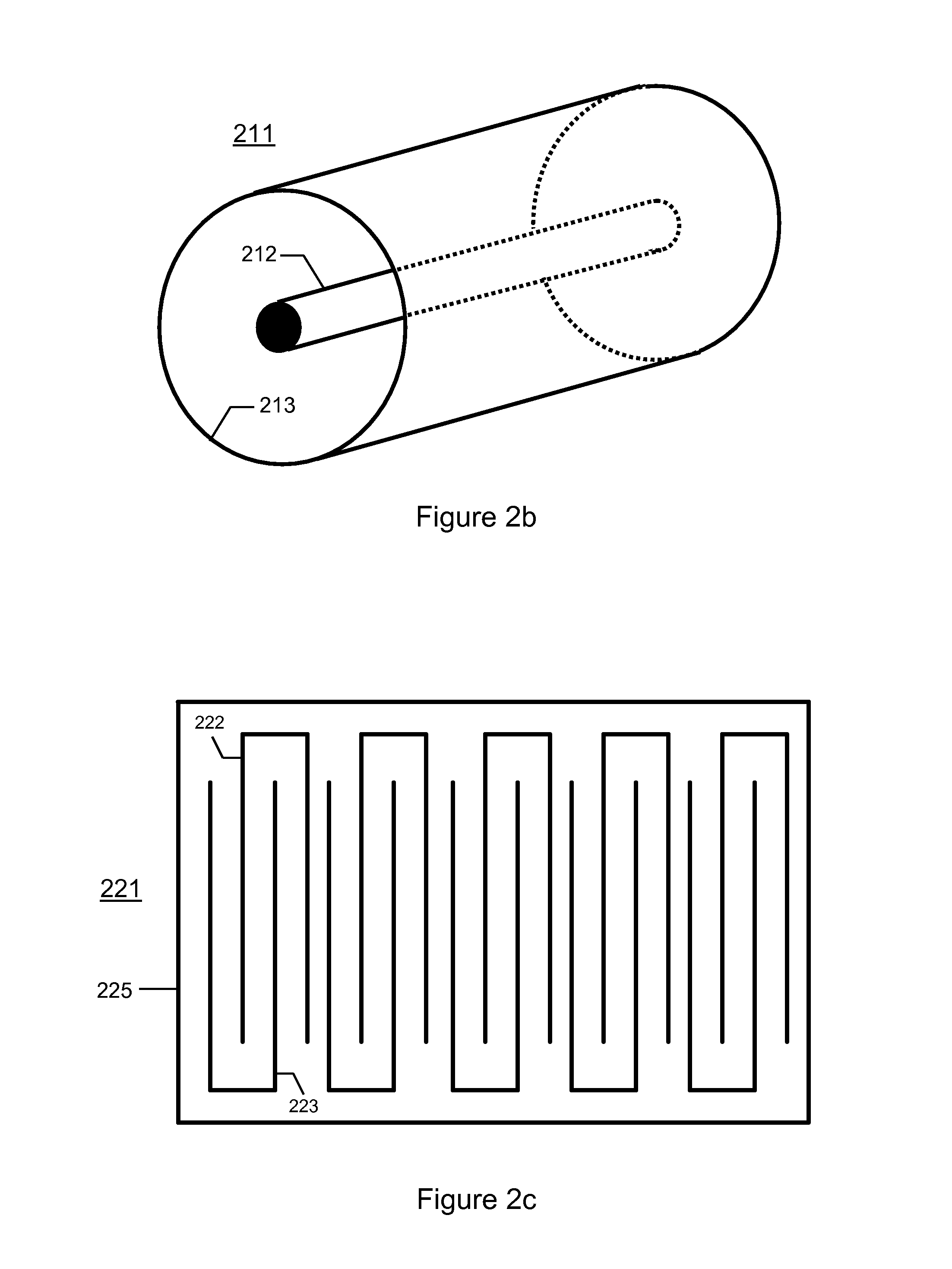Method and Apparatus for Decontamination of Fluid with One or More High Purity Electrodes
- Summary
- Abstract
- Description
- Claims
- Application Information
AI Technical Summary
Benefits of technology
Problems solved by technology
Method used
Image
Examples
Embodiment Construction
Method of Decontaminating Fluid
[0020]The present invention provides methods and apparatuses that facilitate the removal from water or other low-conductivity fluid of arsenic, heavy metals, hydrocarbons, tensides, phosphates, dies, suspended substances, toxic substances, electrochemically cleavable substances, and their compounds. The present invention can also reduce CSB-values and strip out chlorine and aromatics; even stubborn bacteria cultures such as vibrio cholera and enterococcus faecium can be extinguished and filtered out later. The present invention can also neutralize scents. Unlike previous approaches, the present invention does not require the use of membranes, chemicals, micro filtration, or specialty materials or alloys for anodes and cathode construction. The present invention can be realized with simple construction methods, and is flexible enough to support a variety of design options.
[0021]The present invention can be used in open system, partially open system, and...
PUM
| Property | Measurement | Unit |
|---|---|---|
| Fraction | aaaaa | aaaaa |
| Fraction | aaaaa | aaaaa |
| Flow rate | aaaaa | aaaaa |
Abstract
Description
Claims
Application Information
 Login to View More
Login to View More - R&D
- Intellectual Property
- Life Sciences
- Materials
- Tech Scout
- Unparalleled Data Quality
- Higher Quality Content
- 60% Fewer Hallucinations
Browse by: Latest US Patents, China's latest patents, Technical Efficacy Thesaurus, Application Domain, Technology Topic, Popular Technical Reports.
© 2025 PatSnap. All rights reserved.Legal|Privacy policy|Modern Slavery Act Transparency Statement|Sitemap|About US| Contact US: help@patsnap.com



